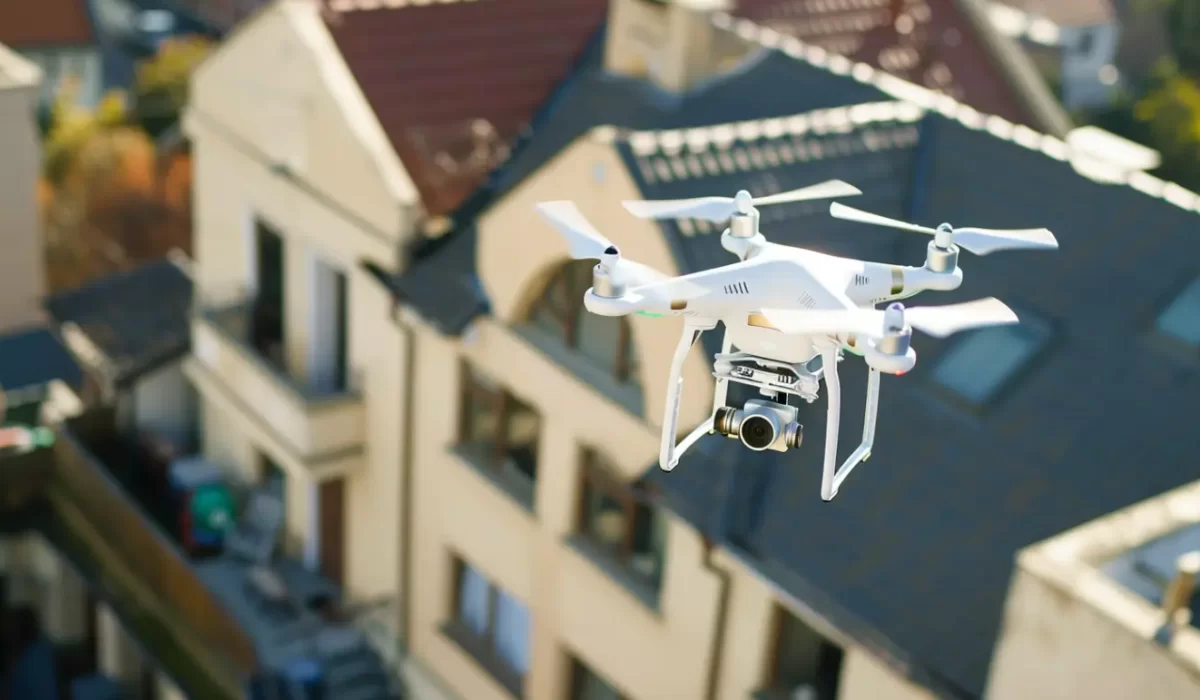Commercial roof inspections are no longer limited to periodic manual checks. The movement toward smart roofing brings a new era of efficiency and protection for commercial properties. By introducing remote roof monitoring and leveraging technology such as sensors and drones, property managers and HOAs in Orange County, CA can now maintain a constant watch over their assets. Fontaine Roofing is at the forefront of this evolution, ensuring timely intervention, optimizing roof lifespan, and greatly reducing overall risk—making technology-driven roof inspections a necessity in today’s competitive real estate environment.
The Rise of Remote Roof Monitoring in Commercial Properties
Across the commercial roofing sector, there’s a significant shift toward integrating remote roof monitoring. Property owners and managers are increasingly deploying roof sensors to monitor their buildings’ conditions in real time, driven by the constant need for efficiency and the desire to avoid unexpected roof failures.
This trend is fueled by the high stakes in building management—where roof problems can disrupt operations and cause substantial financial loss. Remote monitoring not only addresses these concerns but also offers a proactive approach to predictive maintenance and long-term asset protection.
Contact Us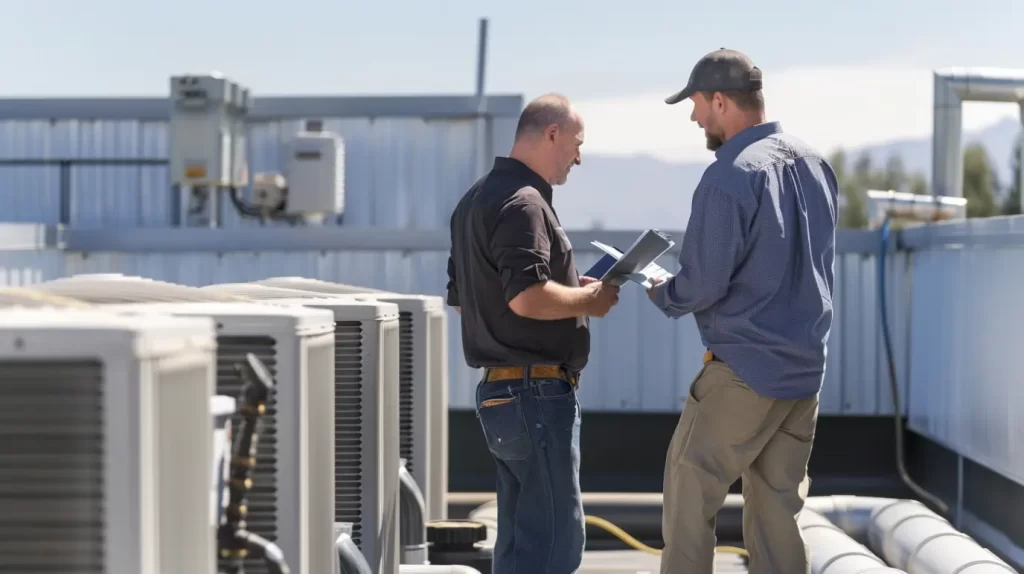
Why Property Managers and HOAs in Orange County, CA Need Advanced Solutions
Orange County property managers and HOAs face unique challenges from the region’s climate and high property values. Advanced roof monitoring is crucial for protecting commercial buildings and ensuring compliance with insurance requirements.
Early issue detection reduces repair costs and minimizes claims. Remote monitoring identifies leaks, water intrusion, or weather damage before they escalate, preventing costly emergency repairs.
Large HOAs and facility management firms in Southern California are adopting this technology to reduce maintenance budgets and streamline claims. Fontaine Roofing provides tailored solutions to help local property managers and HOAs mitigate risks while safeguarding their assets.
Common Roofing Challenges That Spur Technology Adoption
Roofing systems today face challenges that drive the need for innovative technology. Temperature fluctuations and harsh weather can cause material fatigue, leading to leaks and structural damage. Monitoring moisture levels and thermal performance is crucial for property owners to protect roof lifespan.
The complexity of commercial buildings demands a proactive approach. Traditional inspections often overlook damage, resulting in costly repairs or insurance claims. Smart roofing solutions provide property managers with advanced sensors and predictive analytics for thorough condition reports, enhancing safety and supporting informed decision-making for better roof health and efficiency.
Achieving Award-Winning Results with Fontaine Roofing’s Technology Solutions
Fontaine Roofing leads the industry by utilizing advanced technology. With smart solutions like moisture sensors and drone inspections, we enhance roof assessments and provide property managers with real-time maintenance insights. Predictive analytics help identify risks early, reducing repair costs and extending roof lifespan. As a GAF Master Elite Contractor, CertainTeed Shingle Master, and Polyglass Preferred Contractor, we prioritize excellence. We are also approved applicators for Fiber Tite and IB Roofing Systems and hold TRI certifications. Our memberships in CACM, CAI, and NRCA reinforce our status as a benchmark in commercial roofing.
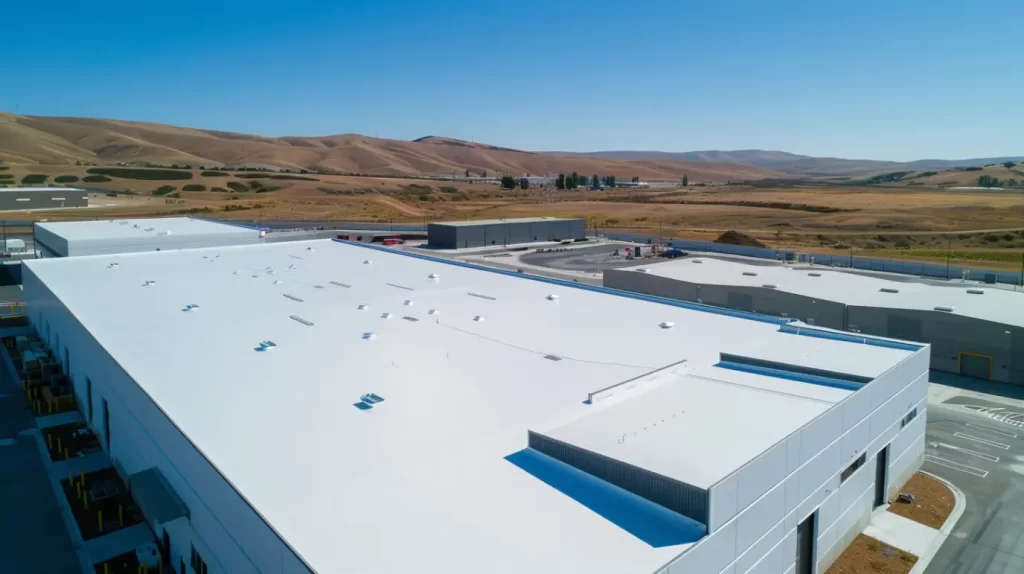
Key Remote Roof Monitoring Technologies
The most effective remote roof monitoring solutions combine three core technologies: IoT sensors, drone technology, and thermal imaging cameras. Each plays a distinct role in providing a comprehensive understanding of a roof’s health and identifying issues before they become costly repairs.
IoT sensors detect real-time changes in moisture levels and structural integrity. Meanwhile, drones conduct aerial inspections of hard-to-reach problem areas, and thermal cameras highlight hidden heat loss or water damage. Together, these tools enable property managers to make informed, proactive maintenance decisions.
Overview of IoT Sensors for Real-Time Roof Insights
IoT sensors have revolutionized property management by enabling real-time roof monitoring. They offer crucial insights into moisture levels, temperature changes, and potential structural damage. With predictive analytics, property owners can proactively address issues before costly repairs arise.
Smart roofing solutions enhance data collection, improving overall roof health. Technologies like thermal imaging and moisture sensors monitor roof performance during extreme weather, ensuring effective insulation and longevity. This proactive approach extends the roof’s lifespan and significantly reduces maintenance costs compared to traditional inspections. Adopting IoT for roof monitoring supports informed decision-making, mitigates risks, and increases property value.
Drones: Aerial Inspections for Hard-to-Reach Areas
Drones for aerial inspections revolutionize how property managers and homeowners associations evaluate roof conditions. Equipped with high-resolution cameras and thermal imaging, these advanced tools enable thorough data collection on hard-to-reach areas. Aerial technology detects potential issues like water damage and material fatigue early, fostering proactive maintenance.
Drones enhance inspection accuracy and significantly cut costs by minimizing labor-intensive manual methods. This innovative solution acts as the backbone of modern roofing management, facilitating large-area monitoring while ensuring safety and efficiency. Adopting drone inspections could redefine commercial roofing standards.
Thermal Imaging, Cameras, and Smart Alarms
Thermal imaging cameras and smart alarms are crucial for modern roof monitoring. They detect subtle temperature changes and heat loss, revealing issues like water intrusion, insulation gaps, or early damage that standard cameras miss.
Thermal scans visualize surface temperature variations, highlighting moisture traps or potential leaks. Smart alarms alert building managers to anomalies, enabling swift action to prevent significant damage.
This technology facilitates early leak detection and deterioration assessment, reducing costly repairs. By integrating real-time intelligence into remote monitoring, thermal imaging and smart alarms improve the accuracy and effectiveness of commercial roof management.
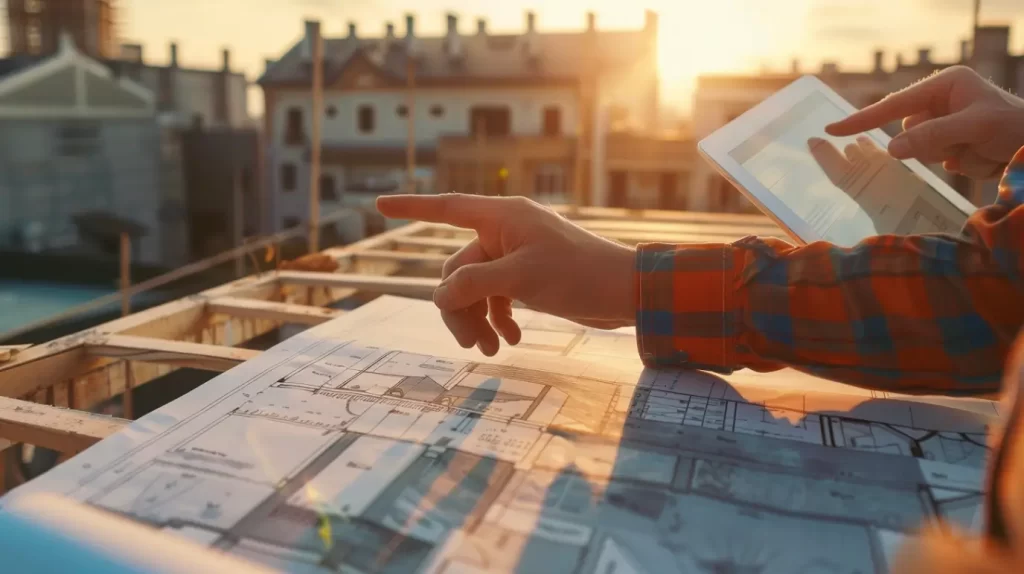
How Remote Monitoring Systems Work
Remote monitoring systems operate through a seamless process of data collection, analysis, and action. Sensors and cameras installed on the roof gather real-time data, which is transmitted to cloud-based platforms for processing and review. This continuous flow of information forms the backbone of predictive maintenance, allowing property managers to track historical data and identify trends.
After integration, automated alerts and comprehensive reports help users respond quickly to emerging problems, minimizing downtime and supporting informed decision-making—all from a convenient central dashboard.
Data Collection: Sensors, Cameras, and Cloud Synchronization
Advanced technology enables effective roof monitoring through data collection. Property managers gain real-time insights using moisture and temperature sensors, along with high-resolution cameras that capture potential concerns.
Integrating smart roofs with cloud synchronization allows seamless data transfer and storage. Users can access historical data and generate reports. By leveraging predictive analytics, property owners can make informed maintenance decisions, addressing issues before they escalate into costly repairs. Smart roofing solutions enhance operational efficiency, prolong roof lifespan, and ensure legal compliance and safety.
Automated Alerts and Predictive Maintenance
Remote monitoring systems excel in automating alerts and scheduling predictive maintenance. When sensors detect abnormal moisture, temperature spikes, or structural movement, they generate instant notifications for property managers.
These alerts minimize guesswork and sporadic inspections, providing maintenance teams with precise, data-driven guidance on urgent needs. Predictive analytics leverage historical data to forecast maintenance requirements, enabling proactive budgeting and resource allocation.
By identifying leaks or structural issues early, remote monitoring helps organizations reduce repair costs and disruptions, ensuring lasting performance and peace of mind.
Integrating With Building Management and Smart Home Platforms
Modern remote roof monitoring technologies integrate easily with building management systems and smart home platforms, allowing seamless data sharing with HVAC, lighting, and security controls for a unified smart building.
This integration enables property managers to monitor all systems from a single dashboard, streamlining maintenance and maximizing efficiency. For commercial properties with advanced management platforms, this connectivity is essential for a comprehensive view of facility health and performance.
When choosing a monitoring system, opt for those that support open protocols and APIs to ensure future upgrades and compatibility with evolving technologies, enhancing operational control and long-term value.
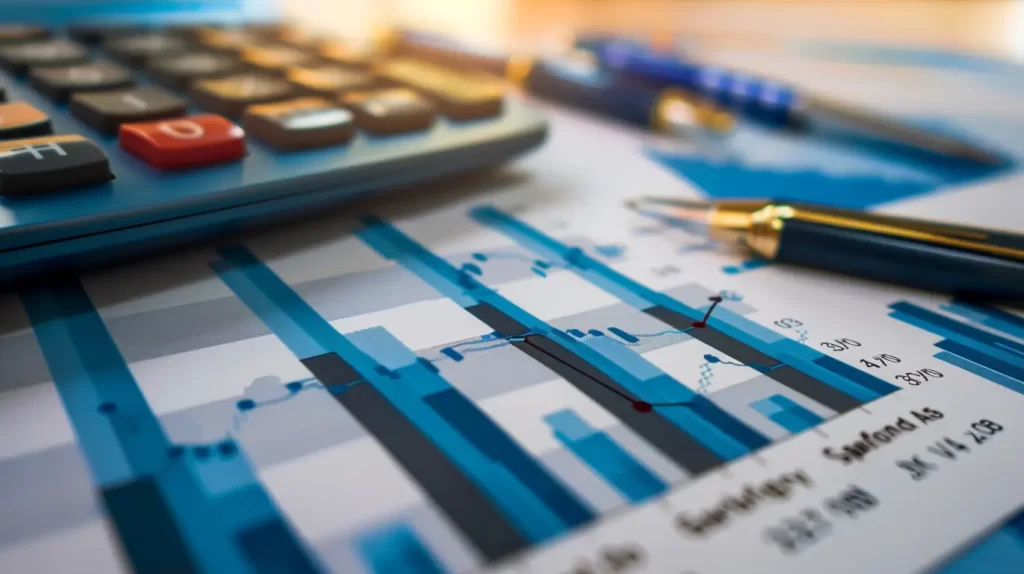
Comparing Remote Technologies with Traditional Roof Inspections
Remote roof monitoring represents a major leap forward compared to traditional manual inspections. While manual checks rely on visual assessment and routine scheduling, remote technologies enable continuous oversight of roof conditions, providing real-time data and early detection of emerging issues.
This advancement means property managers can make informed decisions, reduce the risk of overlooked problems, and optimize maintenance budgets. As we explore further, the benefits for large-scale commercial properties become clear—especially in safety, cost, and accuracy.
Safety and Cost Benefits for Large-Scale Commercial Properties
Investing in advanced roof monitoring solutions enhances safety and cuts costs for large commercial properties. Smart roofing technology helps property managers detect risks like water damage or material fatigue early, allowing for proactive maintenance through real-time data and predictive analytics.
Automated alerts from advanced sensors improve inspection efficiency, reducing labor costs linked to manual checks. Techniques like drone inspections offer detailed imagery, enabling quick decision-making without exposing workers to hazards. By leveraging these solutions, property stakeholders safeguard assets while achieving significant cost savings.
Accuracy and Early Detection of Leaks or Structural Damage
Advanced sensors are transforming how property managers and homeowners associations monitor roofs for leaks and structural damage. Smart roofing solutions utilize real-time data and predictive analytics to assess moisture, temperature, and material fatigue instantly. Thermal scans offer detailed imagery to detect risks before they result in costly repairs.
Drone inspections enhance accuracy by covering larger areas than manual methods. This proactive approach reduces damage and prolongs roof lifespan. By integrating these technologies, property owners can ensure compliance, cut long-term repair costs, and maintain thorough reports on their roofing systems, securing peace of mind in their investments.
Overcoming the Limitations of Manual Roof Inspections
Traditional roof inspections often miss critical details, risking property owner safety. Manual methods are labor-intensive, error-prone, and provide limited visibility. In contrast, advanced sensors and drones deliver comprehensive assessments that reveal hidden issues.
Real-time data, thermal imaging, and moisture sensors enhance accuracy, enabling predictive maintenance before structural damage occurs. This proactive approach improves decision-making for insurance claims and legal compliance, leading to cost savings and extended roof lifespan. By shifting from manual to innovative solutions, property managers can ensure their roofing systems last longer.
Why Choose Us
Utilizing technology for remote roof monitoring transforms property management for HOAs in Orange County, CA. By integrating IoT sensors, drones, and thermal imaging, you gain real-time insights that enhance safety and reduce costs from traditional inspections. These innovations enable early issue detection and streamline maintenance, keeping your properties in peak condition. Embrace these modern technologies to position your management strategy as efficient and forward-thinking. Ready to elevate your roofing management? Contact Fontaine Roofing today to explore our award-winning remote monitoring solutions.
Read our blog: Evaluating Multiple Roofing Bids: What to Compare
Frequently Asked Questions
Can remote roof monitoring really prevent expensive repairs?
Yes, remote roof monitoring delivers early warnings for leaks and structural issues using predictive maintenance and moisture sensors. By catching problems before they escalate, property owners can intervene quickly, drastically reducing repair costs and avoiding disruptive, costly repairs.
Is there a risk to privacy with drones and smart sensors?
Drones and smart sensors must comply with legal privacy standards. Solutions like Fontaine Roofing’s operate strictly within regulations, focusing exclusively on roof conditions rather than personal spaces, ensuring both effective monitoring and full legal compliance for property owners and tenants.
What is the cost range for setting up remote roof monitoring, and what factors influence it?
Costs for remote roof monitoring vary depending on building size, sensor types, and integration needs. Factors such as the number of sensors, complexity of installation, and compatibility with existing systems influence the total investment. Fontaine Roofing provides tailored quotes to suit each property’s requirements.

